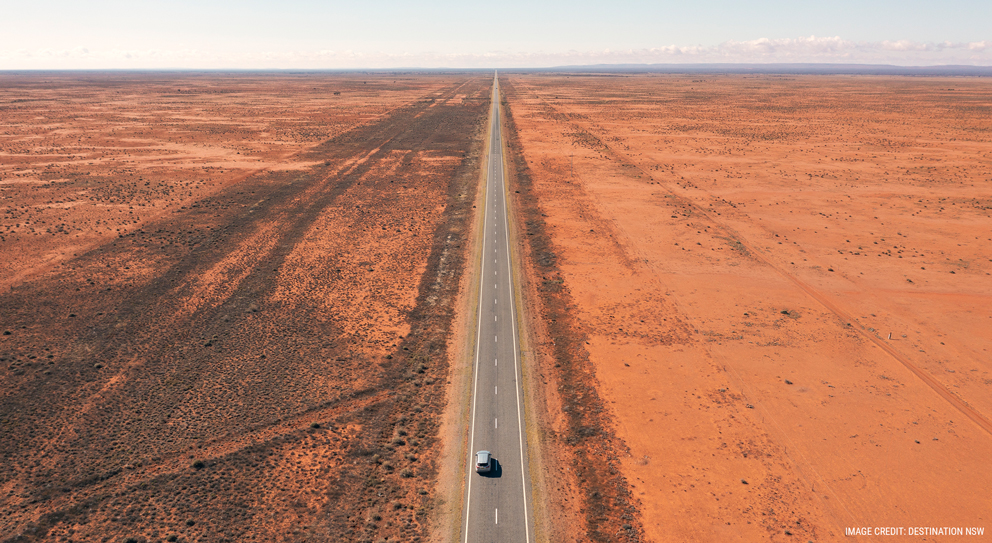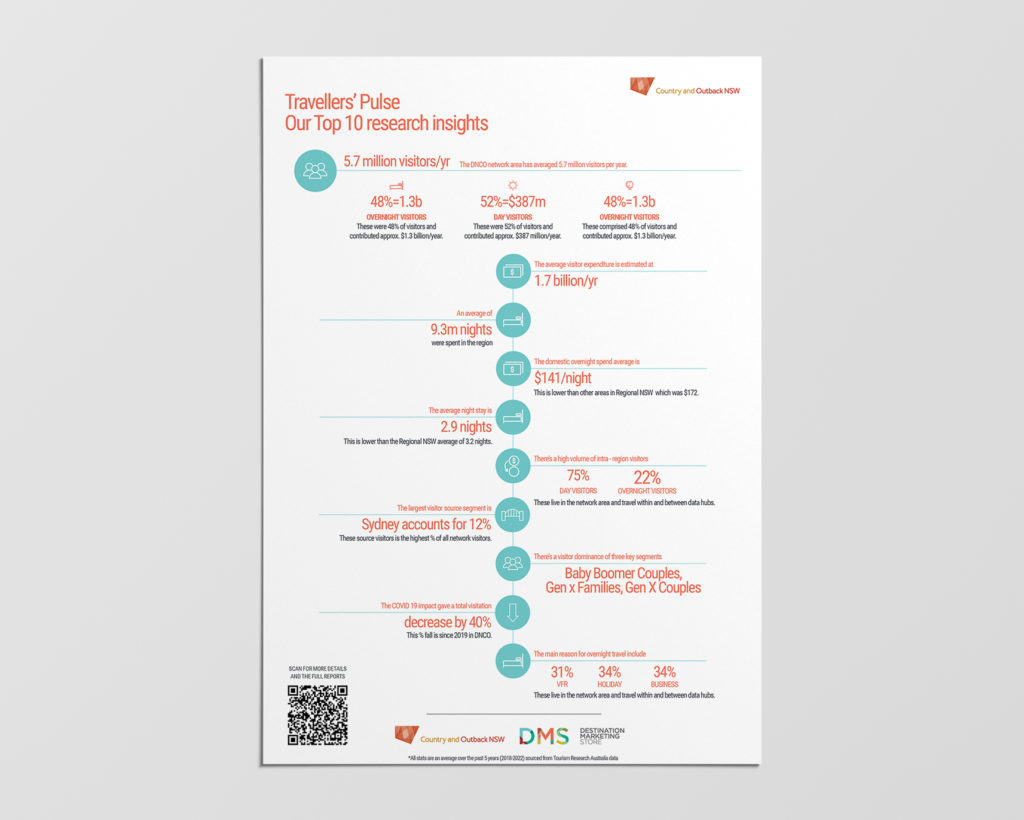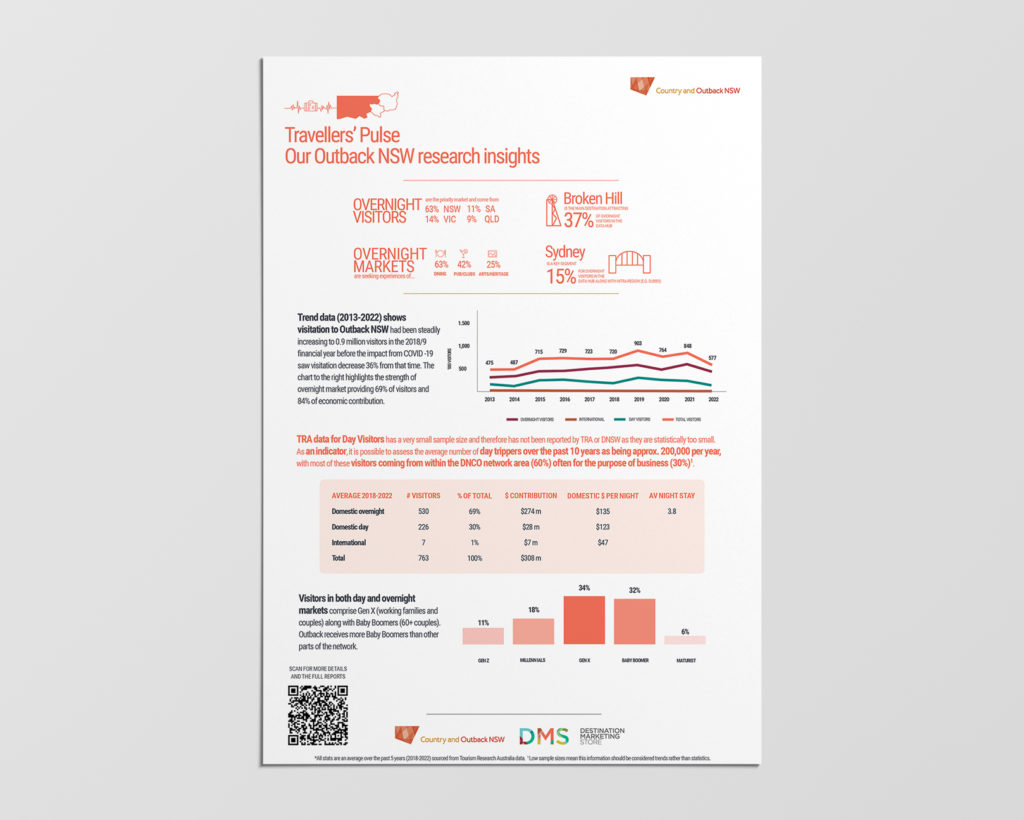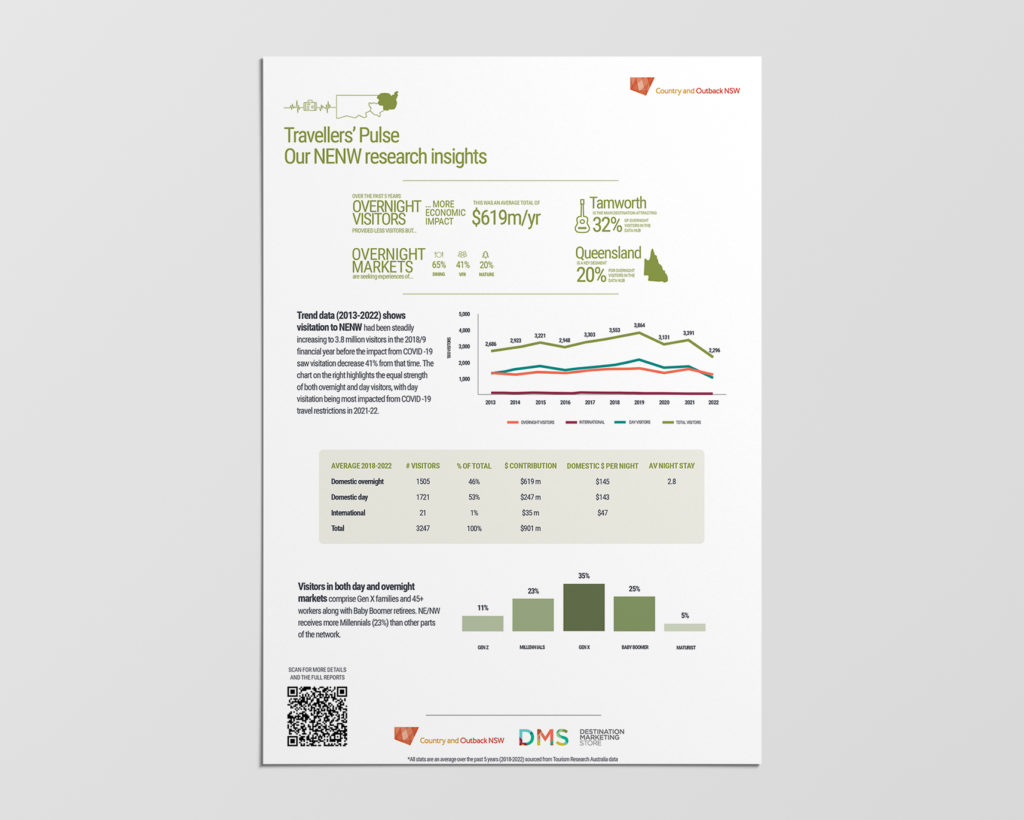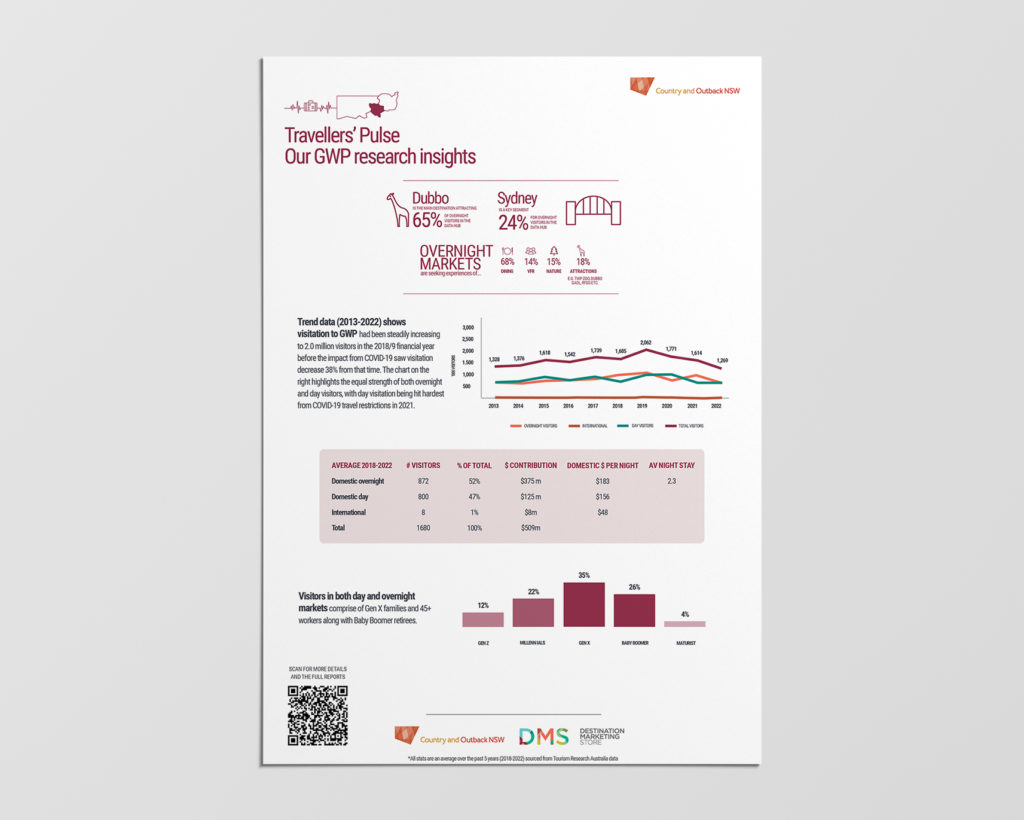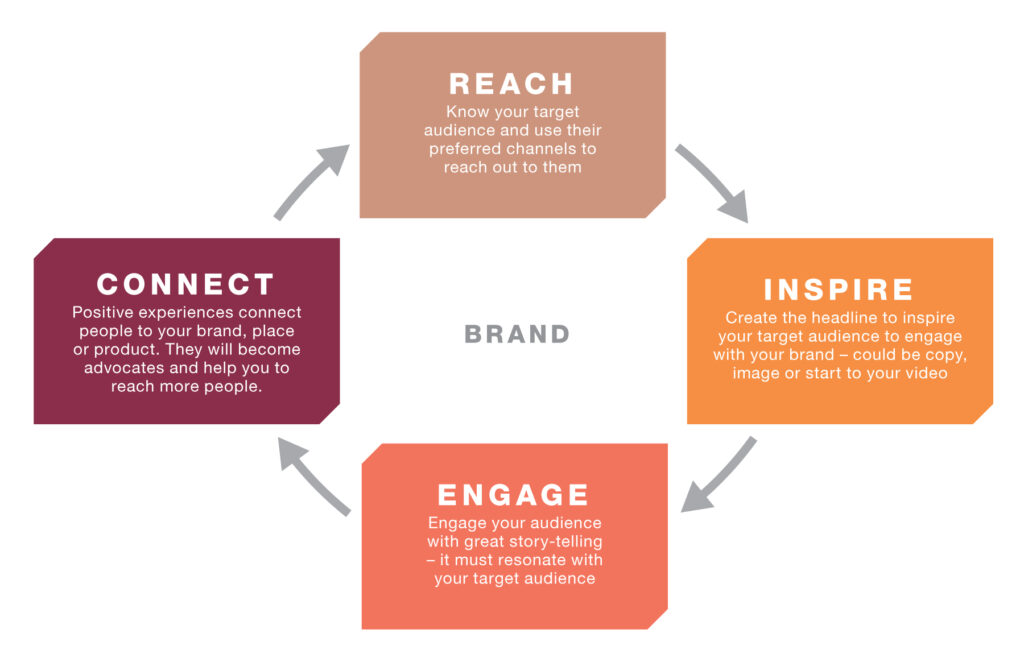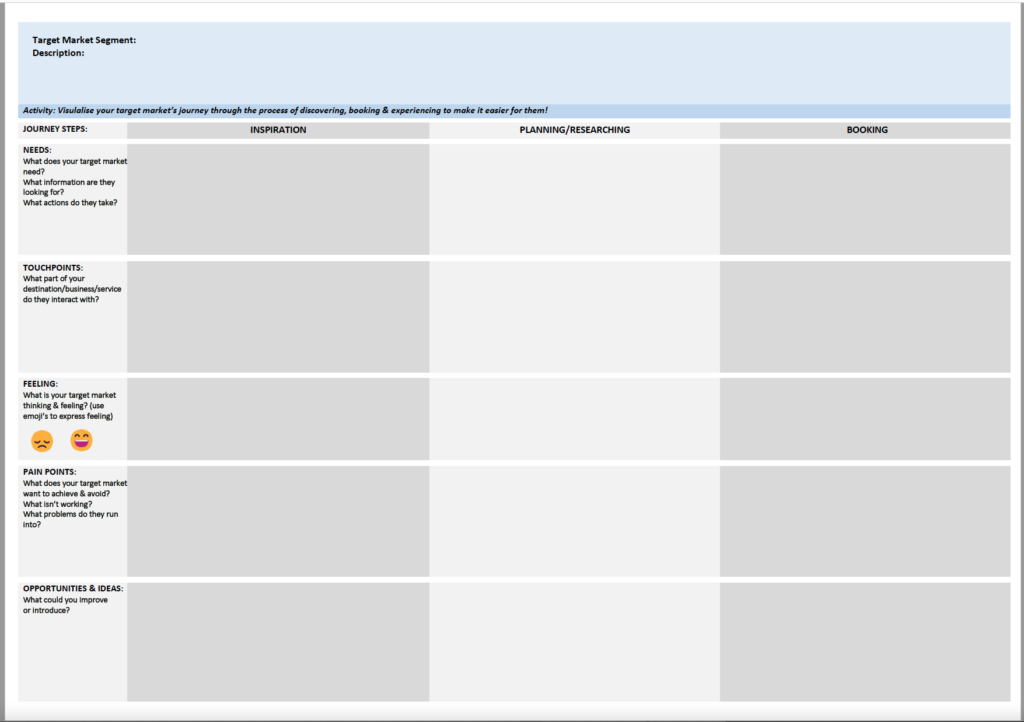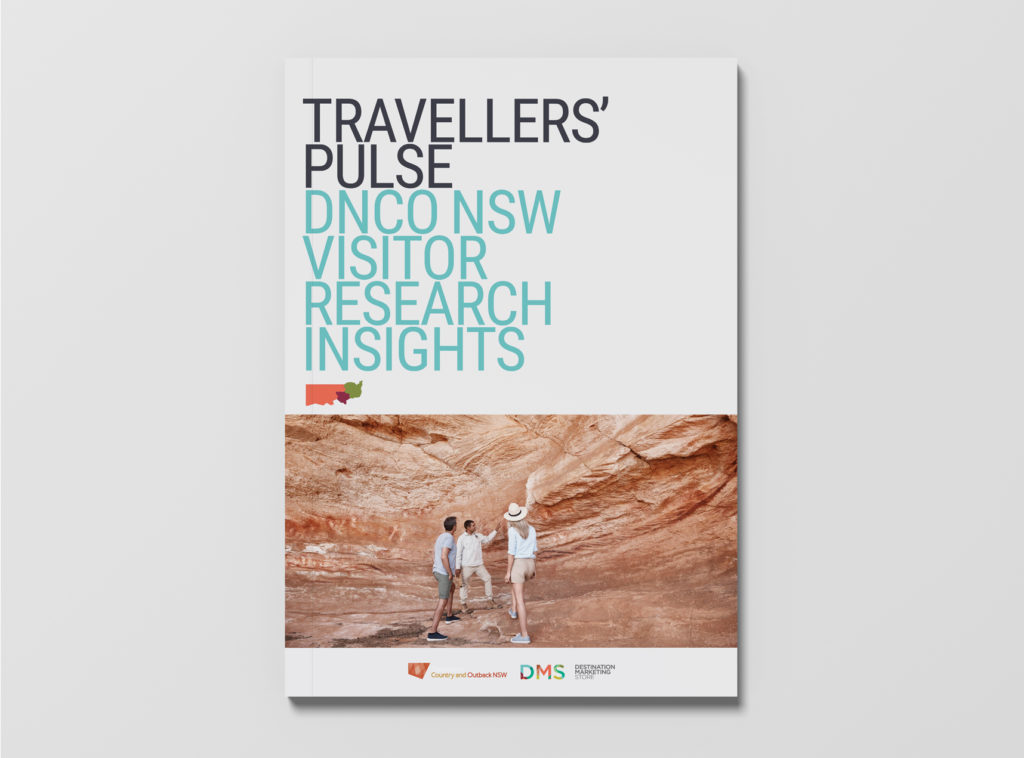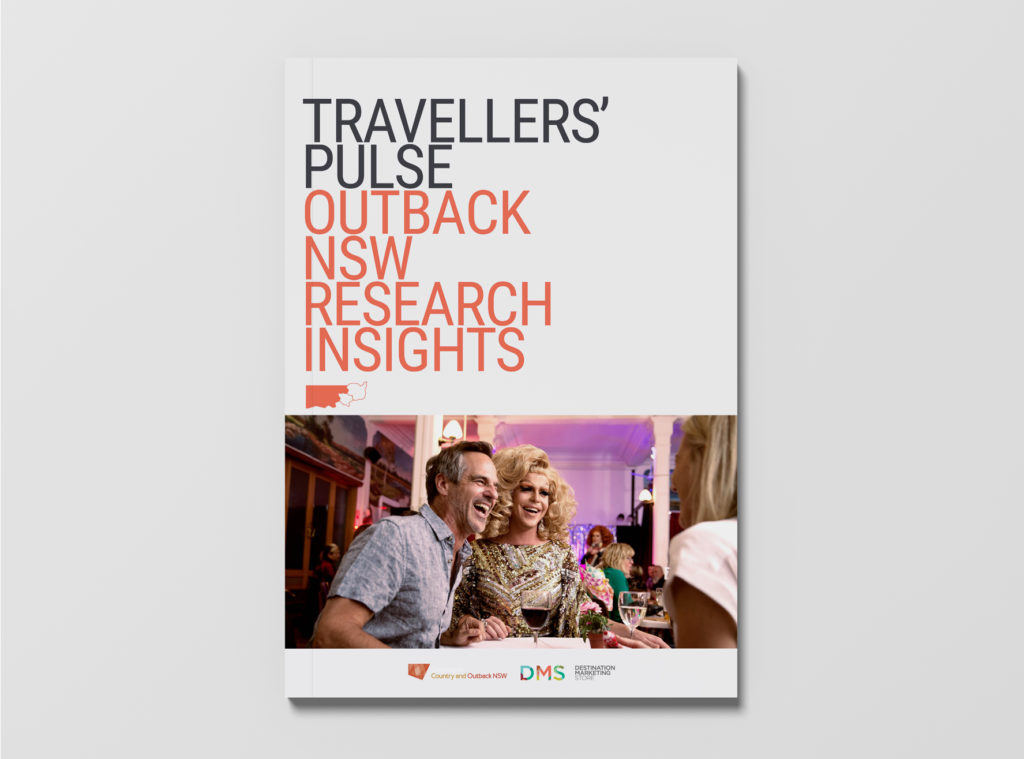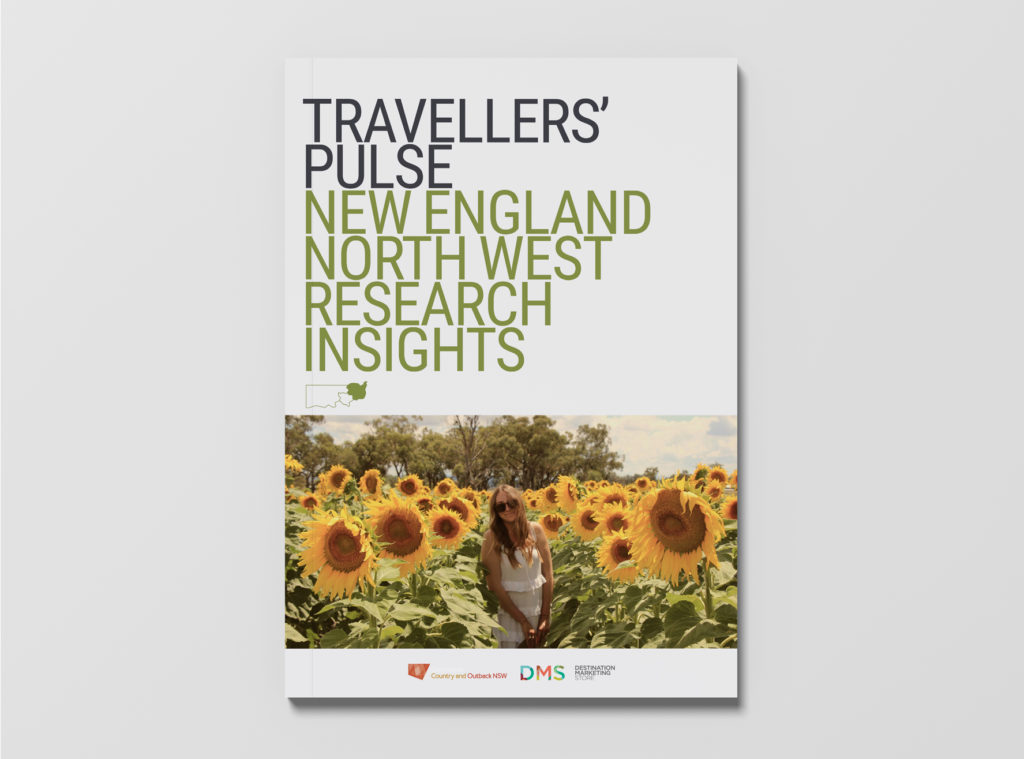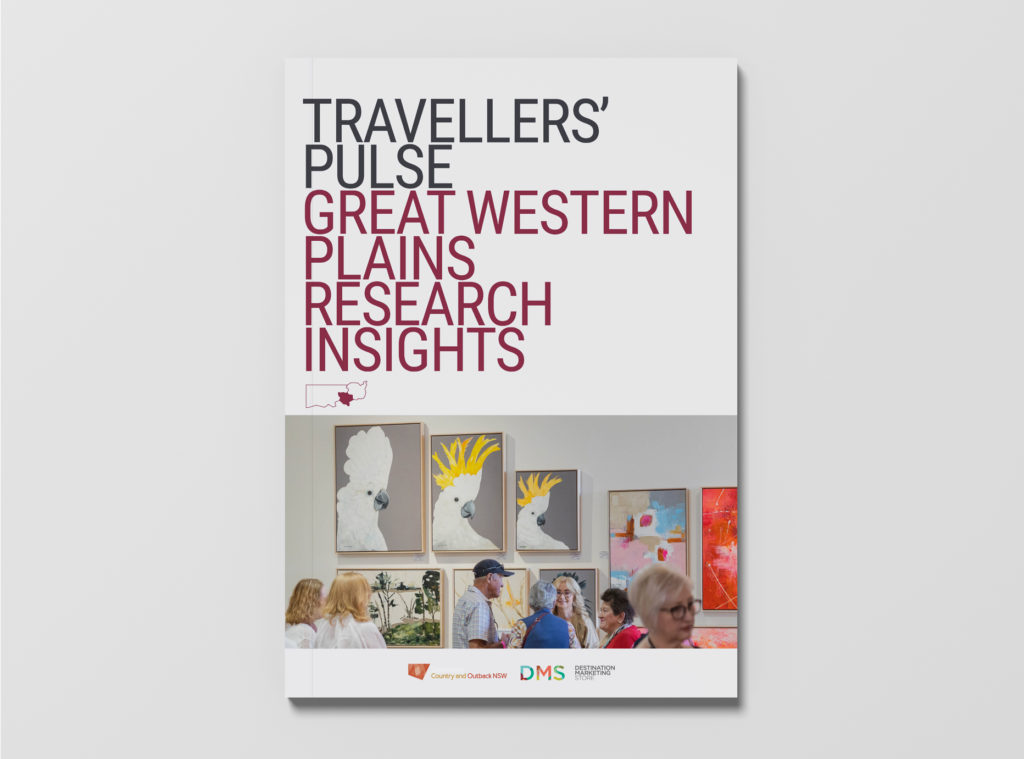Destination Country and Outback NSW (DNCO)
The region is vast, covering more than 40% of NSW and incorporating 25 local government areas as well as the Unincorporated Far West Region. It offers an amazing array of landscapes, experiences, and attractions for people to enjoy, whether they are visiting for work or holiday. Our research is designed to reflect this diversity by focusing in on three primary sub-regions or hubs: Outback NSW, Great Western Plains, and New England North West. Find out more about Destination Country and Outback NSW via this link… Destination Country and Outback NSW.
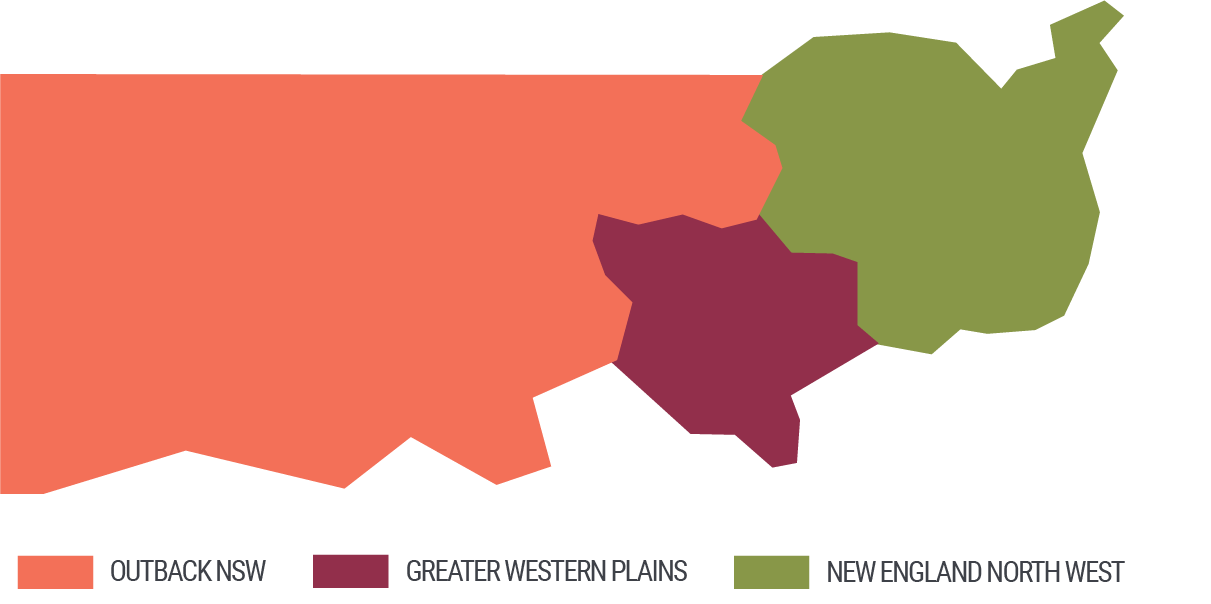
DNCO’S TRAVELLERS' PULSE 2023
Designing the right research methodology has been a critical stage in the development of the DNCO research project. Three research stages were necessary to incorporate local and global travel trends, visitor sentiment analysis and an online traveller forum, to uncover a deeper, richer understanding of visitors to the whole Network Area – and each of the three network hubs.
In the first stage it was important to uncover practical insights to inform everything from marketing and visitor services through to experience development. The first step has been to establish primary facts about the trends of visitation to the sub-regions, their travel behaviours, and characteristics. We have used Tourism Research Australia (TRA) data to establish the Fast Facts for each hub, providing baseline statistics for future research stages.
DNCO’S 2023 FAST FACTS
THE CUSTOMER JOURNEY FRAMEWORK
Practical insights into using the research
The customer journey is about identifying and optimising all the touch points that a customer or visitor has with your destination or business, from dreaming about their next trip (inspiration) through to booking (conversion), planning (information) and sharing their experience with family and friends (word of mouth advocacy).
We’ve outlined below some key considerations when mapping the customer journey of your target markets.
A critical consideration is understanding what people are looking for at each stage.
- Is it inspiration or more detailed planning information?
- Is it convenience that comes with online booking?
- Is it content, such as videos and images, that they can share with their friends and family to invite them too or simply boast about what a great place your destination is to visit?
Best practice in mapping the customer journey should start with knowing who your target markets are as well as understanding their pain points at each touch point. This means you can better target your efforts to reach and inspire them to visit your destination. And make it easier for them to keep them coming back, stay longer or even spend more.
A high level overview of some key considerations in the customer journey.
Create a customer journey for your target market: download our customer journey map.
The 7 key areas of the customer journey and what they mean for you.
1. PUT THE VISITOR FIRST
2. NOT ALL MARKETS ARE THE SAME
3. COMMUNICATING THE RIGHT WAY
4. ENCOURAGE VISITORS TO SPEND MORE
5. IN-DESTINATION VISITOR SERVICING
6. DELIVERING HIGH QUALITY VISITOR EXPERIENCES
7. GROW YOUR REACH
1. PUT THE VISITOR FIRST
Walk in their shoes for a moment (target market personas can help with this) – think about their desires, expectations, and barriers to travel. From the customer’s perspective, they want you to communicate with them in a way that resonates with their motivations; not just to read everything about all your attributes. Remember, people make decisions with both their hearts and minds!
2. NOT ALL MARKETS ARE THE SAME
It seems obvious but too often we forget to be focused on our audience or target markets. If they like surfing or theme parks, then Country and Outback NSW is not for them. Don’t waste valuable resources trying to be everything to everybody. Unpack motivations by market segment. For example, a Generation X Family is wanting a different experience than a Baby Boomer couple, even down to the best time of year or week to travel.
3. COMMUNICATE THE RIGHT INFORMATION AT THE RIGHT TIME THROUGH THE RIGHT CHANNELS
Newspapers have been doing this for a long time – they start with a headline (inspiration) and then provide more detailed information for those who are interested in reading more. Adopt this approach by separating the stages of communication. What will work to inspire people in an era of the attention economy, where you need to stand out among the crowd. When it comes to trip planning, have you thought about all the things that will make their preparations easier? Don’t try and do all the heavy lifting in the same channel – in today’s world, a multichannel approach is critical for promotion, visitor servicing and advocacy.
4. ENCOURAGE VISITORS TO SPEND MORE: TIME, MONEY OR BOTH
One of the most unloved parts of the customer journey sits between when people book the main things, such as airfares or accommodation and when they arrive in-destination. However, this period is exactly when they are starting to plan their trip. They need useful information, such as the ideal itinerary, what’s on (events and tours), making bookings for popular restaurants, which tracks, trails or roads are open, through to practical tips on the weather and what to pack. This is a job for both the destination as well as local businesses and accommodation providers.
5. IN-DESTINATION VISITOR SERVICING
We know from Tourism Research Australia (TRA) research that over 92% of visitors to a region do not visit the Visitor Information Centre – we need to make sure they’re receiving the right information too. Recent Google Research found that 85% of leisure travellers decide on activities only after having arrived at the destination – this represents a huge opportunity to increase yield or length of stay by encourage them to book before they arrive! However, we also need to be better prepared to share information on what to do while in the region. Striking a balance between tours and guided activities with attractions and free or self-guided activities is paramount.
6. DELIVERING HIGH QUALITY VISITOR EXPERIENCES IS CRITICAL TO GROWING ADVOCACY
Sometimes the little things make a big difference. Whether its information for planning their experience or a little something that value adds to their enjoyment. The more you surprise and delight, the more likely people are to recommend you to their friends and family. Think of the Tiny Nice Things (TNT) you can do or provide for your customers to keep them coming back.
7. GROW YOUR REACH
Advocacy drives your marketing spend well beyond your budget. If your visitors have a great experience at each touch point along the customer journey, they will tell their friends and family all about it. It’s called word of mouth advocacy and it’s the greatest friend of any destination or business. Look for ways to help your customers or visitors to share their positive experiences and engage with them in a positive and constructive way if they provide feedback. Advocacy helps you to reach more people who are more likely to be in your target markets.
Our visitor insights are drawn from two primary sources
SENTIMENT ANALYSIS
We use specialist software to explore traveller reviews of products and experiences. This captures the things people are saying or images/videos they are sharing about your destination with their friends and family.
ONLINE TRAVELLER FORUMS
We conduct online forums with travellers to discover more about their experiences and obstacles when travelling in regional Australia. We select participants based on their fit with the target markets for the region as well as for their interest in travel to these or similar destinations.
These insights are then combined to explore and explain the behaviours of travellers who have visited your region. In essence it is the who, how and why of traveller behaviour. You will also discover findings corresponding to the new Future of Global Tourism Demand research undertaken by Tourism Australia (released in November 2022).
The diagram below provides an overview of the insights mapped to and between each of the three hubs across Destination Country and Outback NSW.
DNCO’S 2023 RESEARCH REPORTS
A short report has been prepared for each hub, which integrates findings from the sentiment analysis and online traveller forums.
GLOBAL AND DOMESTIC TRENDS IN TRAVEL
An understanding of consumer preferences, motivations and barriers to travel is essential to inform a visitor-centric and future-focused approach to destination management and marketing. Travellers’ Pulse draws on a wide range of sources, including but not limited to SKIFT Research, Phocuswright, Euromonitor International, Booking.com, Camplify/Karryon, Deloitte Access Economics and Tourism Australia’s Consumer Demand Project (CDP), among many others.
The Destination Country and Outback NSW Destination Management Plan 2022 – 2030 (February 2023) highlights the most relevant trends in travel and tourism for the broader region (see page 15).
See the report here: https://www.dnconsw.com.au/app/uploads/2023/01/DNCO-Destination-Management-Plan-2022-2030_web.pdf
Tourism Australia (TA) has recently undertaken a comprehensive research project, Future of Global Tourism Demand (November 2022). It adopts an experiential approach and examines motivations and desires of relevant traveller segments relevant to Australia.
There are two areas of interest that assist us in understanding visitors to regional Australia as well as international travellers:
- The Typology of Visitors seeks to categorise the motivations of visitors or ‘what they want’ from their holidays. TA identified 7 main motivations – this is a useful reference point for us to think about the main types of visitor motivations (page 42)
- The second area to consider is how visitors categorise their own experiences and the suite of experiences they are interested in. TA identified 7 main experience clusters, along with over 300 individual experiences (page 50)
See the full report here: https://www.tourism.australia.com/content/dam/digital/corporate/documents/future-of-demand/tourism-australia-global-future-of-tourism-demand-research-public-report.pdf
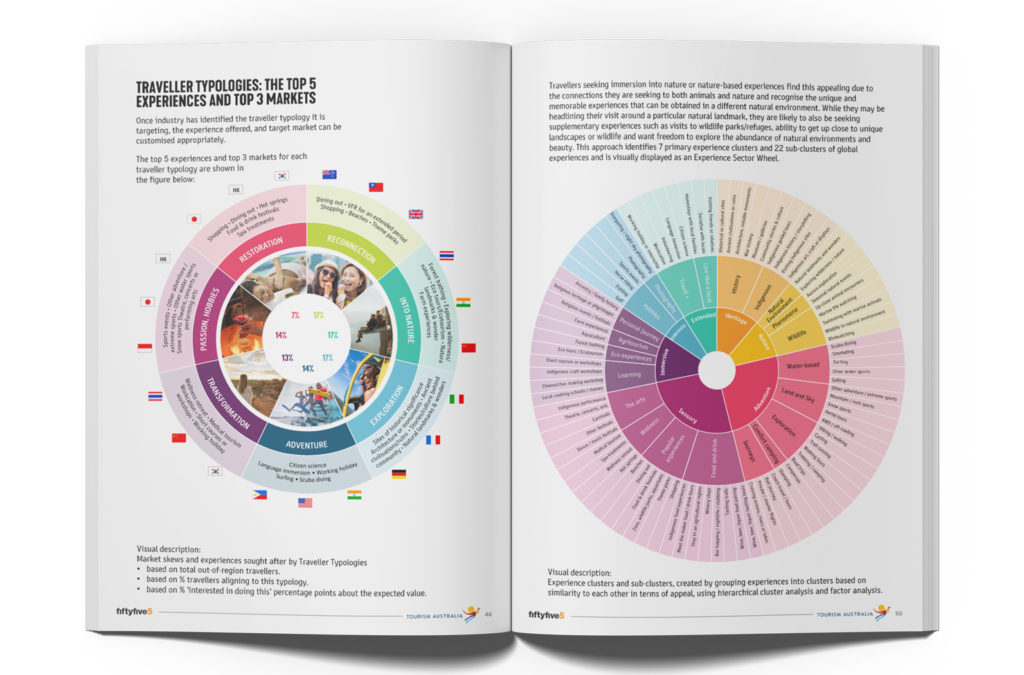
Meet our Research Strategist: Dr Jo Mackellar
Dr Jo Mackellar, our Research Strategist, led the Travellers’ Pulse research project for Destination Country and Outback NSW. Strategies and actions informed by research is a key to success for any destination, event or business. Jo has delivered research and consultancy services for local and state government agencies since 2002. With an emphasis on regional growth, Jo utilises a mixed methods approach to understand visitor motivations and perceptions – and their impact on the social and economic value to destinations. This approach is encapsulated in and underpins the credibility of the Travellers’ Pulse research program.

